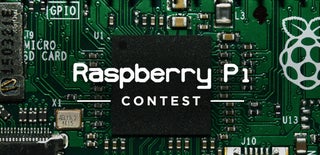Introduction: Wearable Electronic Badge
Here is a great project to undertake if you plan on going to a Hardware/Python meetup, or planning to go to your local Makerfaire. Make a wearable electronic badge, which is based on a Raspberry Pi Zero and a PaPiRus pHAT eInk display. You can follow the steps below to make one of the two badges , or remix it to make your own
- 3D printed Instructable logo badge, which you can wear around your neck using a lanyard.
- Or add Pi zero and the eInk display to your jacket/shirt pocket
Step 1: List of Parts Required
Here are the list of part you will need
- Raspberry Pi Zero W (or the older version 1.3)
- Pi Supply PaPiRus Zero ePaper/eInk pHAT v1.2
- SD card at-least 8 GB
- Adafruit’s PowerBoost 1000 charger, this also has a recharging circuit
- Lipo battery 3.7v of at-least 2000mAh or higher
Soldering Station and Soldering wire to connect the PowerBoost to the Pi Zero W
In addition, if you plan on 3D printing the STL files attached in the next steps, you will need a 3D printer/ and filament. If you don’t have one handy you can use cardboard from a package box and draw the outline of the components on it.
Step 2: 3D Printing
3D print the STL files attached, in my case I used a Flashforge Creator Pro and Hatchbox Yellow 1.75mm PLA.
Here are suggested slicer setting for all STL files
- Layer height 0.2mm
- Infill - 25 %
- Nozzle Temperature – 205C
The STLs were designed using Autodesk Fusion 360, and the Instructable logo was designed after converting the logo to an SVG format and importing it in Fusion 360.
Printing the Instructable logo STL took about 35 mins, and will depend on you other slicer settings. And, the other STL to add to a shirt/jacket took 15 mins.
Step 3: Painting and Adding a Lanyard to Instructables Badge
After 3D printing I also painted Instructable Logo with Uni Paint Pen(Fine Line PX-21), which you should be able to find at your local hardware store
Now, if you don't have PowerBoost or a Lipo, you can use small power bank, which you will have to find a way to neatly hide in you jacket pocket, when wearing the lanyard.
Also, if you don't have a powerbank handy, you can still follow along with the steps below and modify and upload the code to the Pi Zero W, and add the 3D printed Instructable bot logo and have only one image display – something like you instructable member id or you twitter account details , as you see in the picture above. With no power connected to the Pi the image and text will still show,as this PaPirus is a eInk display which means you don't need any power to keep the image on the eInk screen.
Now to hang you badge around your neck, you will need a lanyard and Key rings to add to the ears of the Instructable's bot 3D printed parts
Step 4: Soldering and Adding the Electronics
Now if you plan on using the Powerboost 1000, so that you can change the images and text on your badge, when you out about.
- Solder the +ve USB connector side on the Powerboost to PP1 contact on the Pi Zero W
- And the -ve USB connector to PP6 contact on the Pi Zero W as you see in picture above
Step 5: Connect Pi Via SSH and Install and Upload the Code Below.
Flash and SD with the latest version of Raspbian OS on the SD card, from https://www.raspberrypi.org/downloads/
Once done run the following commands after you SSH into the Pi
sudo apt-get update
sudo apt-get upgrade
Before restarting the Pi use the command raspi-config to enable SPI and I2C interfaces and also expand your file system , if you plan on using your Pi Zero for other stuff.Now reboot the Pi
To install the software for the PapiRus hat follow the steps at - https://github.com/PiSupply/PaPiRus
Basically you can get and install the software using
curl -sSL https://github.com/PiSupply/PaPiRus | sudo bash
Once done don’f forget to set you screen size of the eInk display using
sudo papirus-set [1.44 | 1.9 | 2.0 | 2.6 | 2.7 ]
Run a quick test to check if your installation was successful
papirus-system
Now download the code attached and upload it to Pi, I have only added the python file, and not the images , so you will have to download your own image and modify them. Don’t forget to rename the images with the switch number , so for button SW1 the image should be named as SW1.png
Attachments
Step 6: Adding the Badge to Your Jacket Pocket
Now to add the Pi badge to a jacket or your shirt, you can either cut and sew the jacket pocket as you see in the picture above, basically here the size of the cut is slightly (2 mm) larger that the Pi pin header slot, so epaper display is outside the pocket, which means you will have access to the button on the eInk display
Or just have the badge hang over your T-shirt pocket so you still have access to the buttons on the eInk display, also as a suggestion is to find a way to add pins to hold the 3D printed part to you shirt, so that components dont fall off when you bend.
Also if you don’t have a 3D printer you can use piece of cardboard from a package box , and draw the outline of the Pi Zero , PowerBoost and Lipo battery so that it fits in your pocket.

Participated in the
Raspberry Pi Contest 2020














